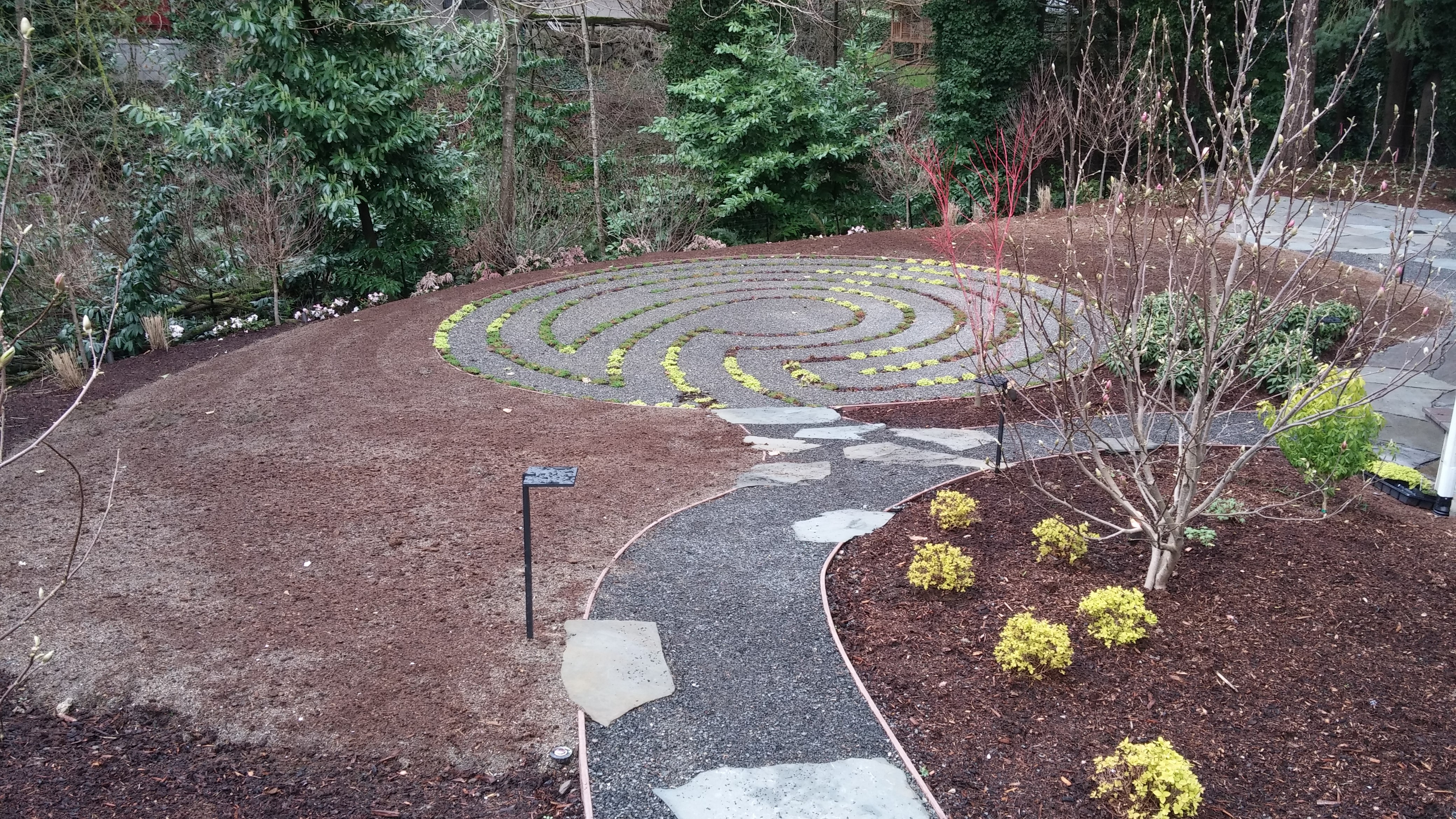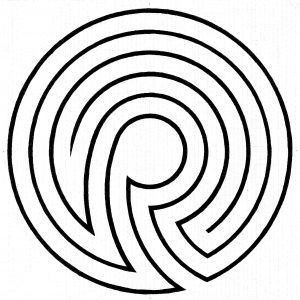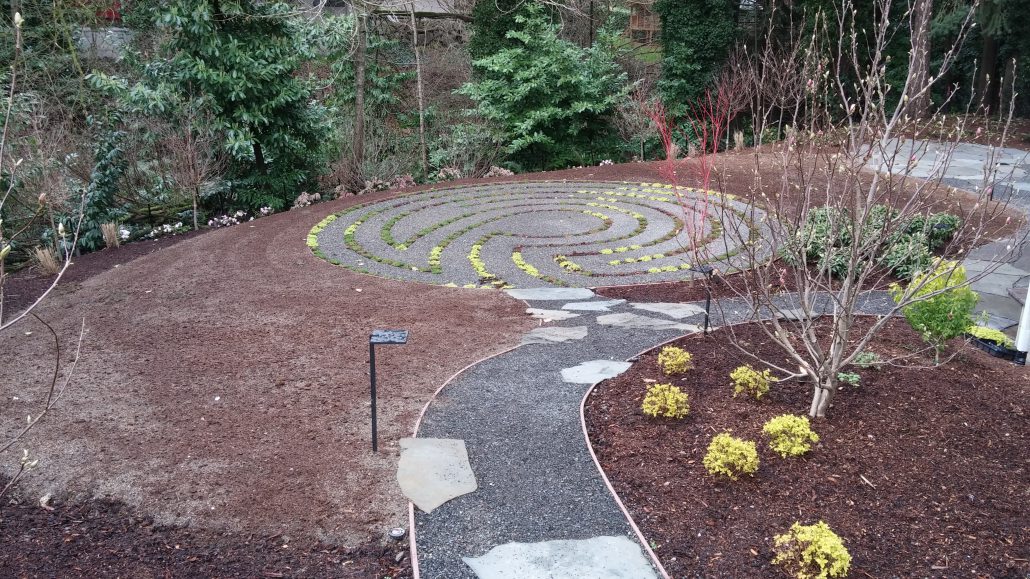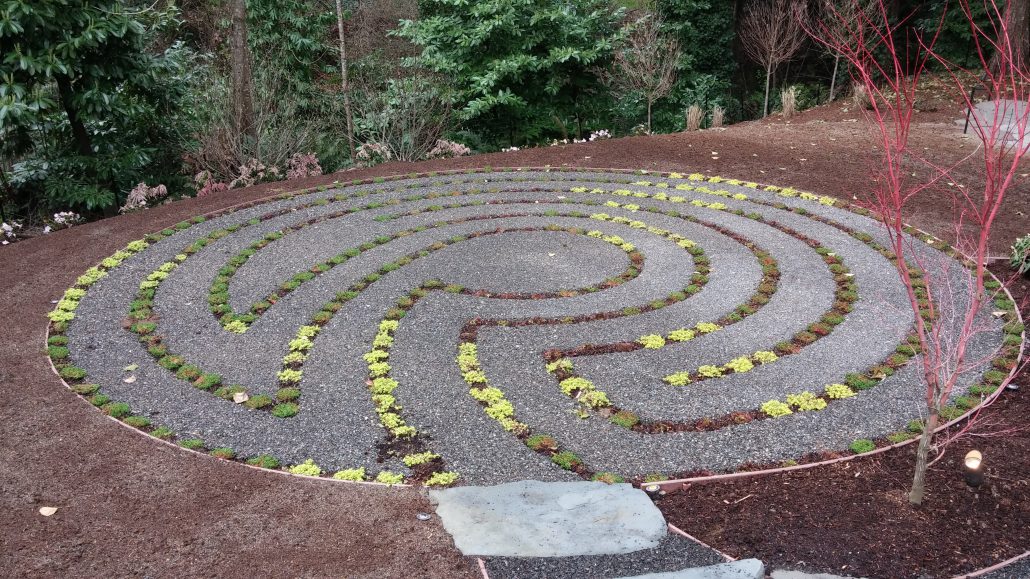A Labyrinth for Walking Meditation

In 2014, Seattle landscape architect Brooks Kolb received an intriguing design challenge from a client in Bellevue, Washington: to incorporate a labyrinth in her garden for her daily walking meditation practice. While the history of labyrinths is somewhat obscure, as graphic images or symbols they date back to clay tablets from the ancient world. One of the most famous ones was incorporated into the stone floor tiles of Chartres Cathedral in France. The religious concept at the time was that by following the spiraling pattern of the “paths” on the floor, one was symbolically undertaking life’s journey on the path to Salvation. Labyrinths are distinct from hedge mazes in that one can see the entire pattern from above; there is no getting lost in a geometric labyrinth. Another way to put it is that the purpose of a maze is to solve the puzzle of getting lost, while the purpose of a labyrinth is to find oneself in a spiritual sense.
Working from a geometric spiral pattern provided by a professional labyrinth designer, Brooks designed a pattern of light green ground covers alternating with crushed rock paths, and the circular form of the labyrinth was inscribed into a lawn. The photographs show the original pattern and the built result right after installation, before the lawn had seeded in.




